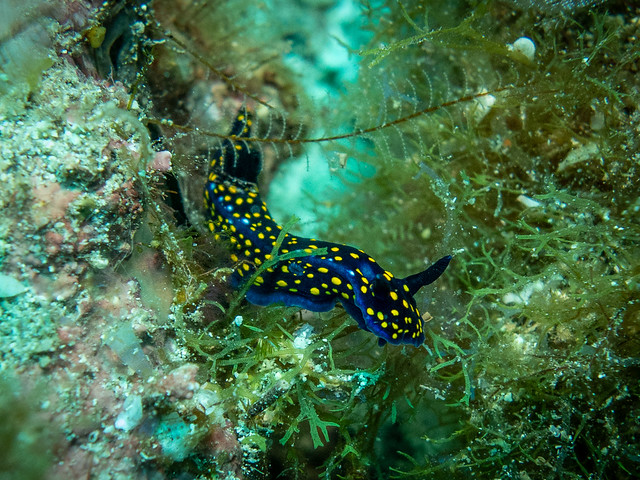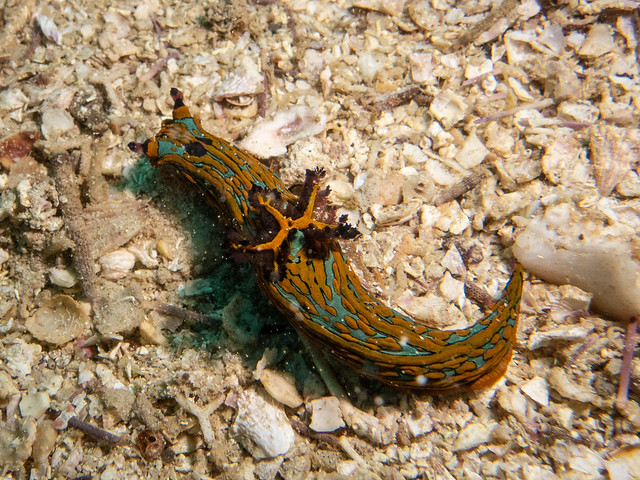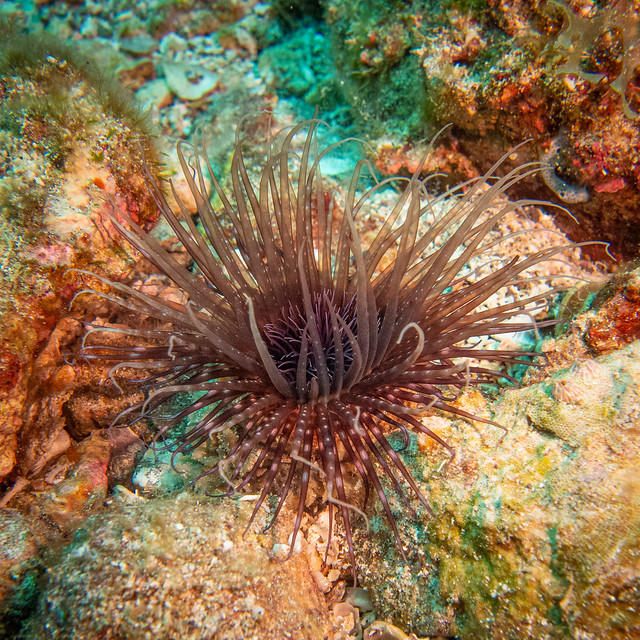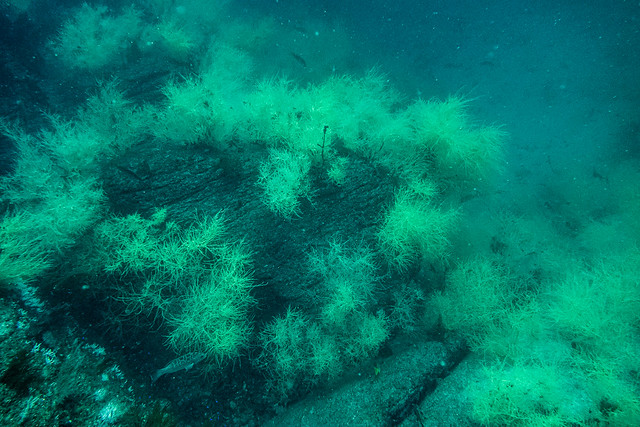When I first started diving and people pointed out little stuff like nudibranchs (sea slugs) I was a bit surprised. I was thinking more of fish and sharks and sea turtles. It's like I'd gone to Africa to see the lions and zebras and they'd pointed out a beetle. But it didn't take long before I realized that while a shark might be impressive, there's much more variety in the little stuff, aka the invertebrates. And unlike the big stuff, the little stuff is almost always there. It might not be easy to spot, especially when you're new to it, but once you start looking closely, there's almost always something interesting. A good example of that is when I zoom in on photos on the computer, and I realize that behind the sea anemone I was photographing are a brittle star and a shrimp. Given the variety of these creatures, this is another long post.
Nudibranchs are a good example. On land, most people have little to no interest in slugs, other than perhaps how to kill them as garden pests. Granted, slugs on land are nowhere near as brightly colored and intricately shaped as slugs underwater. "nudibranch" means "naked lung". Their "lung", the organ they breath through, is external. You can see it on the bottom right of this California Chromodorid.
Here's a less common Baumann's Chromodorid:
Another relatively common one are the Slimy Slugs. (Their color varies from brown to green.)
Of course, one of the problems with the little stuff is that it can be quite small. When this one was pointed out I had a hard time seeing what was there since it was only about 1/2 inch long.
Christmas Tree Worms are another colorful form of underwater life. What looks like two creatures is actually one. The "trees" are used to breath and to absorb food. If you disturb them, they instantly withdraw. The bulk of the worm is out of sight. They come in a wide variety of colors, from white to orange to red to blue to yellow. They can be on their own, like this one, or in large numbers covering a rock.
Feather Duster Worms are similar but only have a single round "fan".
These tube-dwelling anemones come in a variety of colors. I like the ones with the orange centers.
There are various other unusual anemones around. Although they mostly stay in one place, many anemones can move, although very slowly.
Underwater life can be counterintuitive. What appears plant-like is often an animal, and what appears to be a single thing is often a colony. It's amazing that a colony of creatures like tiny anemones is able to form a structure like a coral. Most of the corals around Loreto are soft corals, although that includes gorgonians which actually produce a hard skeleton. This is a closeup of a California Golden Gorgonian showing the individual polyps.
When I first started diving here, people would talk about the black coral. I never saw any coral that was black, but I didn't want to sound stupid so I didn't say anything. Eventually I learned that the black coral was yellow/green and I had been seeing it all along. It's only the dead skeletons that are black. It is quite abundant in certain (usually deeper) areas.
Lion's Paw sea cucumbers (aka Accordion or Sticky Snake sea cucumbers) are normally nocturnal but this one was out during the day for some reason.
Arthropods are creatures with external skeletons and jointed legs. On land we're most familiar with insects and spiders, but they also include lobsters and crabs. The spiny lobsters found here are quite different from the Atlantic lobsters people usually eat. I love how colorful they are.
This was the first time we saw Staghorn Hermit Crabs. Instead of shells, these hermit crabs use a hollowed out piece of coral. It uses its one large claw to seal the entrance when it withdraws inside. The coral is still alive.
This little coral guard crab was in one of the cauliflower hard corals.






















No comments:
Post a Comment